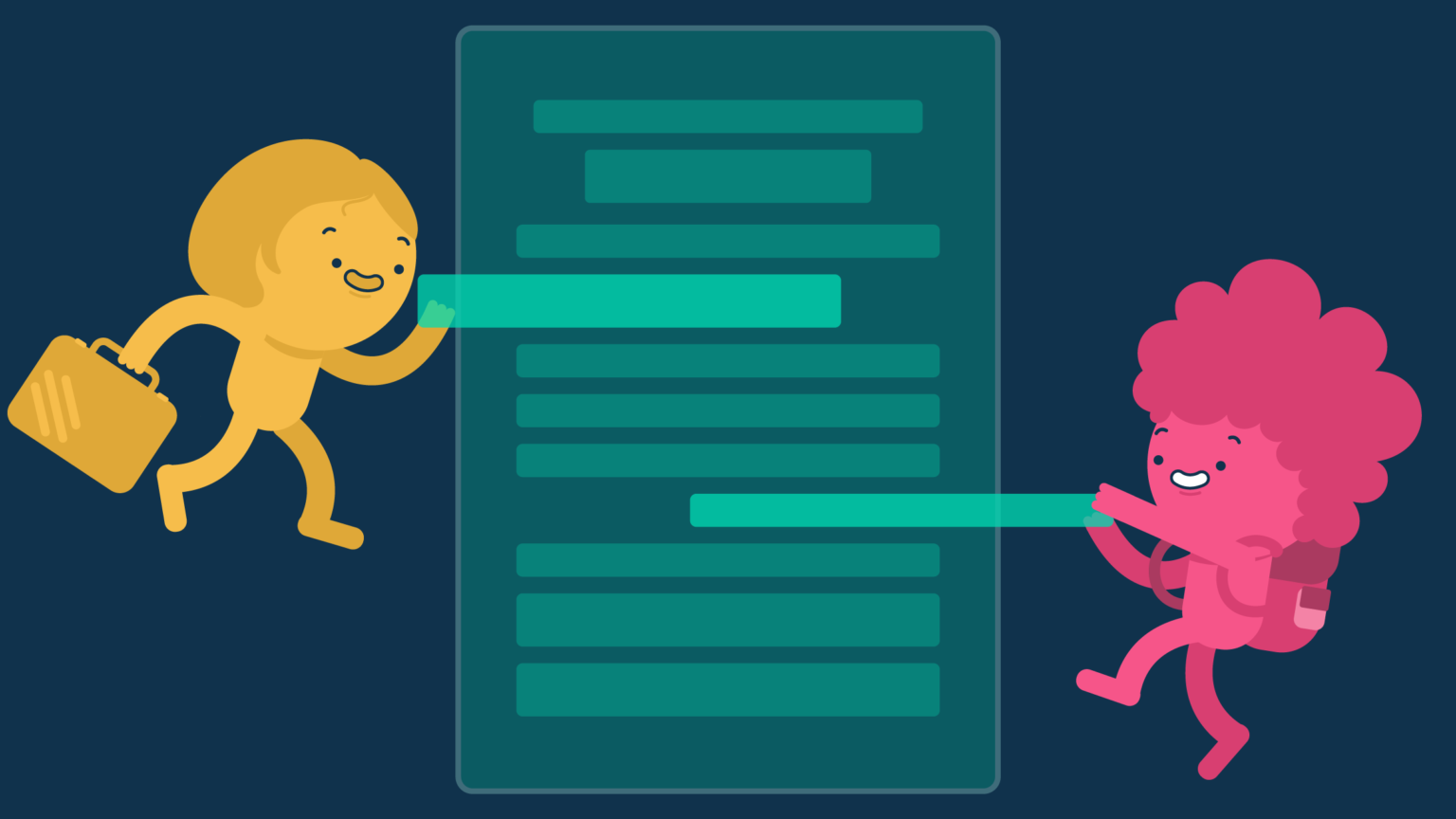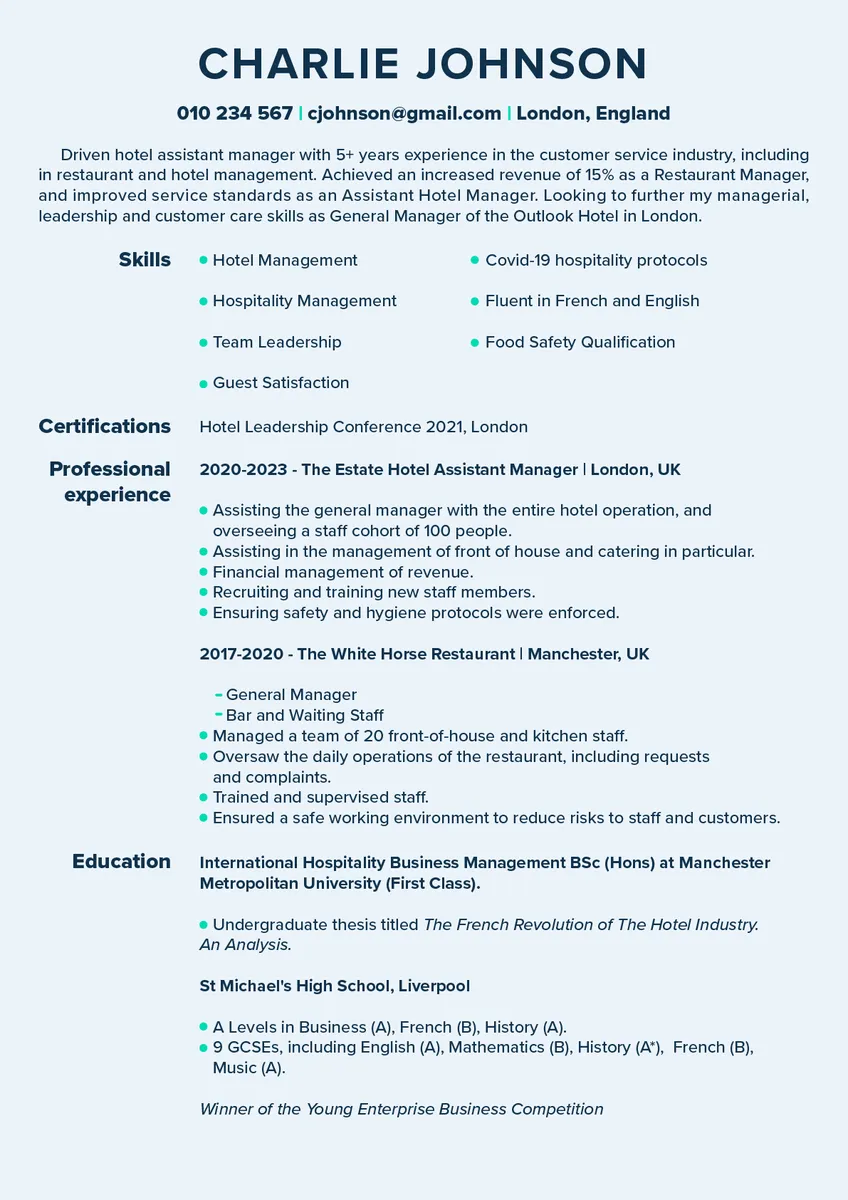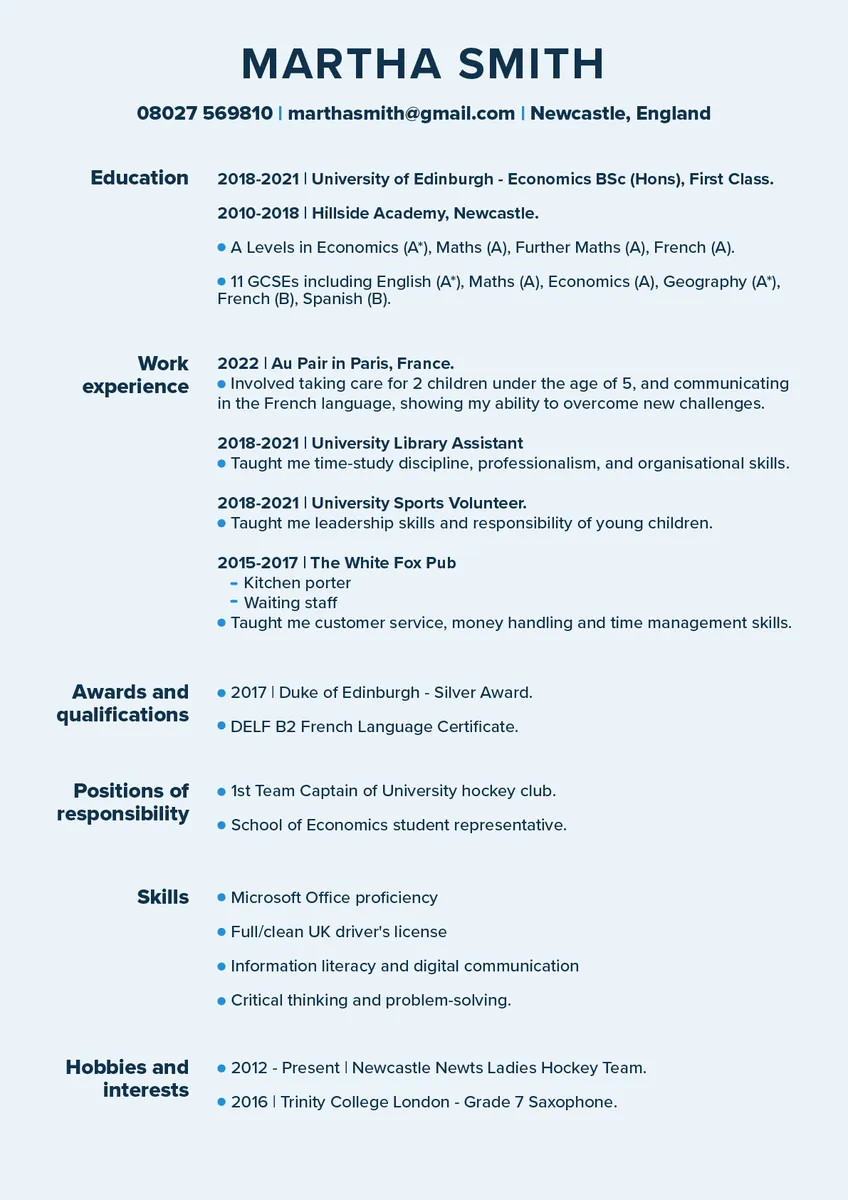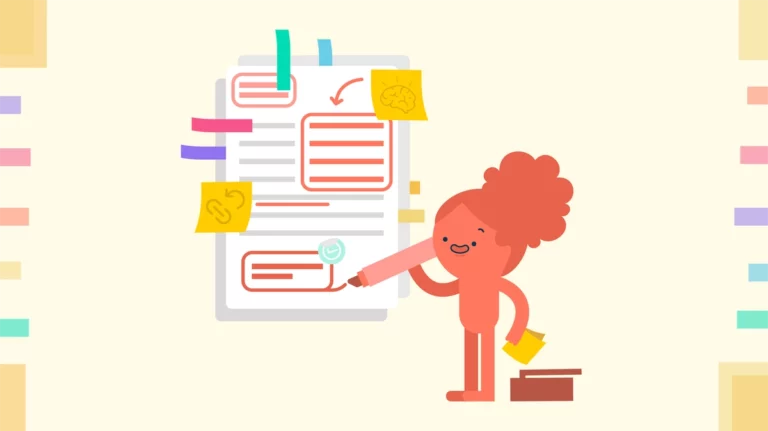How to write a CV for job applications?
Job applications are never fun. In fact, they can be pretty daunting. Whether you’re looking for help in creating your very first CV or needing the inspiration to overhaul your current one, you’re in the right place. The art of writing a successful CV has become a key skill for anyone who wants to land a good job.
Your CV is the first impression a potential employer gets of you when you apply for a job. It is meant to give a clear and precise overview of your relevant work experience and education so that your potential employer can assess how well you would fit in the company and handle the job requirements.
That said, it’s essential to structure your CV in a clear and eye-catching way.
CV Structure
A standard CV should not be longer than two A4 pages. Considering how little that is, not everything you’ve ever done must be listed – at least not in every application.
Here’s a secret: everyone needs two CVs – one where you list every experience, course, conference, and certificate, and one which you fill selectively. The former is used to help you keep track of your jobs and personal development, whereas the other will vary depending on the position you’re applying for.
When structuring a CV, it needs to include:
- Personal information section. This part includes your full name, means of contact (phone number, address, email), and possibly a picture. While CV photos are not necessarily compulsory (and legally speaking, you should not be asked to include one), you can do so if you feel confident.
- Profile. A profile is a concise description of who you are and what your qualities and skills entail. Think of this as the highlighted part of your CV, and choose your words carefully. Don’t go overboard (nobody believes that anyway), but don’t be shy about who you are. Try to avoid cliché phrases, such as ‘highly skilled’ or ‘hard-working’ – your employer already assumes that 😄. Remember, it’s always about SHOWING your skills through what you’ve achieved and highlighting what makes you want to work in your chosen profession (i.e. what motivates you each day?).
- Professional experience. List relevant jobs in reverse chronological order, with your most recent positions at the top. You can (and should) include a brief description of what that job entailed.
- Tip: edit these sections to match the keywords listed in the job ad.
- Education. Again, start with the most recent one. If your grades were extremely high, you can include them; otherwise, leave them out.
- Key skills and qualifications. While some soft skills, like being a good communicator, are expected in many industries, the recruiter cannot know whether this is true until the interview. You should stick to hard skills that are relevant to a particular position. Similarly, if you have any certifications, list them.
- Publications and presentations. If you’ve worked in a scientific field and published academic papers and books – list them! Similarly, you can list the conferences you’ve attended and the big presentations you’ve given.
How to write a student CV?
If you’re a student or have only just come out of education, you may not have much experience to put on a CV. However, you can make an impression by having a CV that stands out and still lists relevant part-time jobs, volunteer activities you’ve participated in, skills and other credentials gained during your studies.
Tip: if you’ve graduated recently, put education above work experience!
Some things you should include on your student CV:
- Any part-time or holiday jobs you may have had during your studies.
- Your grades at GCSE and A Level (or other equivalent qualifications), especially for core subjects like Maths and English.
- Any awards, qualifications or positions of responsibility you earned during your studies.
- Extracurricular activities, like sports teams, or in-school activities.
- Hobbies and interests – tell them what makes you, you!
How to write a CV with no experience?
If you have had no experience writing a CV before, don’t worry! Take a look at some of these tips and tricks to help you curate the best CV possible.
- Cut the margins. Don’t use standard Microsoft Word margins; that’s too much space wasted. Reduce them to include more content on your pages. Most of the time, HR managers don’t have enough patience to flip through too many pages of your CV – make it easier for them and better for you.
- Bullet points are everything. Avoid text blocks, as they are difficult to get through. Concise bullet points are enough to get your point across, and you can provide further details in the interview.
- Use professional fonts. Let’s not go into the whole hatred for Comic Sans…
- Clean up section transitions. Avoid having a page break leaving several lines hanging on either side.
- Use headings. The ready-made headings and subheadings in Word are a great way to divide various sections of your CV (like work, education, and specific positions/information) easily and clearly.
- Use active verbs. A strong vocabulary is crucial for CVs. Avoid passive statements and vague verbs such as get or do.
- Tailor your CV to the job ad. Identify keywords and include them in your CV. Opt for more relevant experiences rather than mindlessly listing anything and everything you’ve ever done.
- Have a professional email address. We’ve all had at least one fangirl thing in our lives, but better create a new, more professional looking one for job applications.
- Focus on achievements, not responsibilities. Brag about your successes by including numbers and spectrums, if possible.
- Proofread!! Seriously, typos and silly mistakes are pretty common, and they make a terrible impression on employers. Just check out this article to know why you should proofread your CV!
- Don’t worry about gaps. Life happens, as do CV gaps. Try not to stress about it, and, if necessary, provide relevant information about it in your cover letter.
- Always include a cover letter unless stated otherwise. Cover letters are brief statements of your skills and interest in the position you’re applying for. Including one means you’ve taken your time to think your application through, which is what employers love.
How to write a Good CV = Only the First Step
To recap, your CV is a powerful tool in job hunting. Depending on how you structure it can affect whether you get your dream position or not. While it is cruel to dismiss someone fully qualified over the appearance of their CV, it is also not unusual.
To avoid discrimination of such kind, make sure to:
- Include relevant sections in your CV (personal information, work experience, education, skills and qualifications, and relevant publications/presentations).
- Use clear and concise language.
- Tailor your CV to fit the job ad.
- Use bullet points.
- Always go for strong, active vocabulary.
- And don’t forget to attach every document in the email! 😉
Now, go create the best CV ever! Good luck!
Content updated and edited by Grace Bower.
Grace Bower is a keen writer and researcher in all things education, student life, and online learning. Grace is also an accomplished geographer and map enthusiast.









